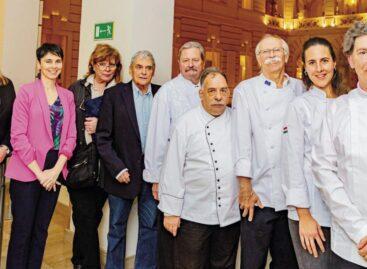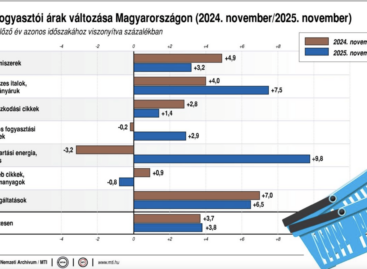The domestic hospitality industry is in a difficult situation
The current situation of Hungarian hospitality is twofold: while Budapest is becoming increasingly popular among tourists and its gastronomic offer is expanding year by year, restaurants in the countryside are often struggling with low demand, economic difficulties and cultural obstacles. Pénzcentrum interviewed Zoltán Herczeg, the responsible publisher of the Dining Guide TOP100 Restaurant Guide, about the past, present and generations shaping the future of Hungarian gastronomy.
The legacy of gastro-communism
 The development of Hungarian hospitality was also significantly influenced by the decades before the change of regime. Under socialism, going to a restaurant was considered a luxury, and eating was primarily an activity at home – this is a consequence of the “gastro-communism” era that still affects us today. While communal dining remained an integral part of social life in Western Europe, visiting restaurants here has slowly faded from everyday life.
The development of Hungarian hospitality was also significantly influenced by the decades before the change of regime. Under socialism, going to a restaurant was considered a luxury, and eating was primarily an activity at home – this is a consequence of the “gastro-communism” era that still affects us today. While communal dining remained an integral part of social life in Western Europe, visiting restaurants here has slowly faded from everyday life.
“During the Monarchy, restaurants, cafés, and espresso bars were part of the bourgeois lifestyle, but after the wars and especially during the years of socialism, this culture was pushed back,” says Zoltán Herczeg. According to him, the cultural roots of gastronomy in the countryside are still shallow, which may be offset over time by the openness of the younger generations and their socialization in restaurants.
Budapest is on the rise, the countryside is waiting
The boom in tourism in the capital has favored the development of catering establishments. The solvent demand and high expectations of foreign guests are constantly pushing the standards up. In the countryside, however, only those settlements where there is a tourist attraction, higher education, or a greater cultural buzz are often able to become gastronomic centers – for example, Debrecen, Pécs, Szeged, or the area around Lake Balaton.
However, in medium-sized cities, where there is not enough solvent demand, lighter catering establishments – bistros, pizzerias, street food units – have emerged. Classic, formal restaurants often have difficulty finding an audience here.
New challenges for quality catering
A dynamic development began in Hungarian gastronomy in the late 2010s, but the Covid epidemic and the subsequent economic crisis broke this momentum. Some catering establishments survived the crisis, but many were only able to restart with reduced opening hours or a smaller staff.
“Currently, there is stagnation, but there are promising signs,” says Herczeg. These new impulses are mainly brought by the younger generations.
Related news
Taxes and proportions
🎧 Hallgasd a cikket: Lejátszás Szünet Folytatás Leállítás Nyelv: Auto…
Read more >The roast goose flies into your mouth
🎧 Hallgasd a cikket: Lejátszás Szünet Folytatás Leállítás Nyelv: Auto…
Read more >Related news
The Hungarian Confederation of Economic Workers also spoke out regarding the inflation data
🎧 Hallgasd a cikket: Lejátszás Szünet Folytatás Leállítás Nyelv: Auto…
Read more >KSH: in November, consumer prices exceeded the values of the same month of the previous year by an average of 3.8 percent
🎧 Hallgasd a cikket: Lejátszás Szünet Folytatás Leállítás Nyelv: Auto…
Read more >In addition to jelly and marzipan Christmas candy, there are more and more specially flavored Christmas desserts on offer
🎧 Hallgasd a cikket: Lejátszás Szünet Folytatás Leállítás Nyelv: Auto…
Read more >






